Padua is the most beautiful city of Italy, and there is a number of attractions that you should see.
Basilica of Saint Justina (Basilica Di Santa Giustina)
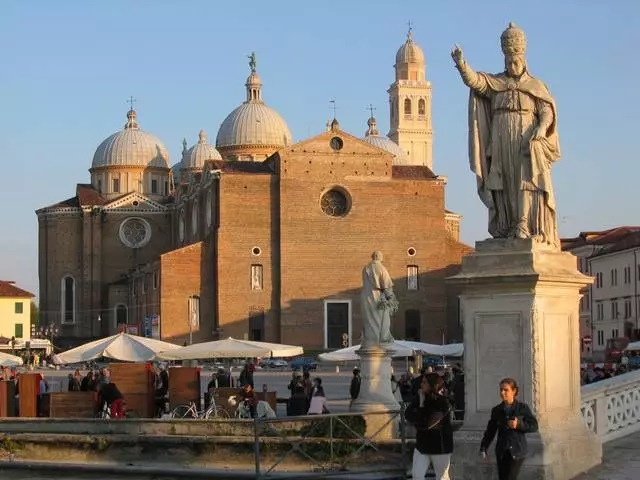

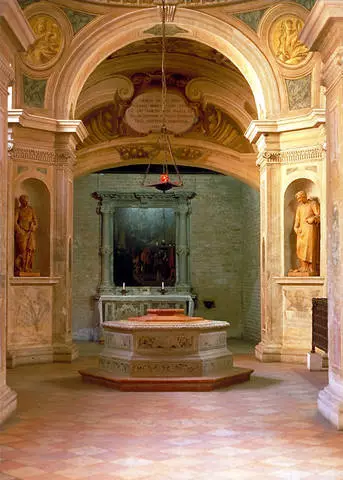
The basilica of this great martyr can be found in the very center of the city. This is not only a famous landmark, but also the object of pilgrimage. This church was built there, where Justina (or Justina) died in 304. In the Basilica, this holy is depicted in the crown, with a palm branch (the symbol of the victory of the martyr over death) and a sword that pierces her breasts. By the way, Justina is also symbol of Venice. The church is decorated with 9 domes with crosses and statues. The church was restored many times, she was reworked and unchanged, and the fact that tourists can see today - the result of the last capital construction in the 16th century.Inside the basilics are the relics of saints, luxurious unusual furniture, terracotta sculptures, paintings. The elegant facade of the Church in the style of the Renaissance with the obvious influence of the styles of Byzantine architecture. It is impossible not to notice the beautiful windows-roses with geometric patterns, as well as two marble griffin. Incredible construction!
Address: Via Giuseppe Ferrari, 2 / A
PORTA ALTINATE (Porta Altinate) Gate
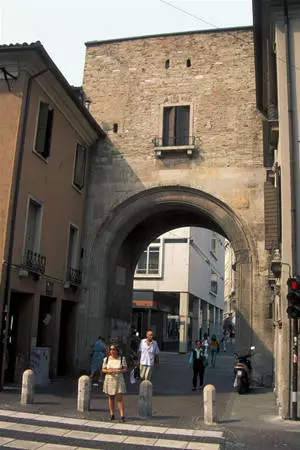
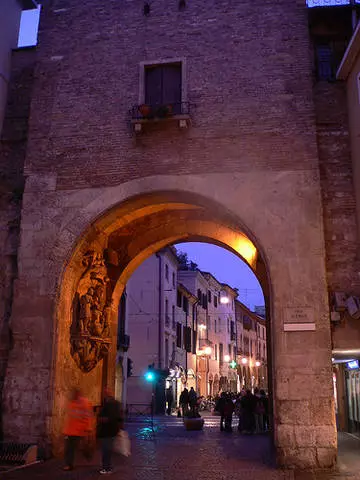
Gate and adjacent mills in ancient times served directly to protect the city from enemies. True, in the middle of the 13th century, the gate was still destroyed and rebuilt only a few decades later, and then they were repeatedly restored and completed. Now the gate, or rather, the remaining massive stone arch is only a reminder of those troubled times. The gate is decorated with very beautiful stucco.
Address: Piazza Garibaldi Square
Admiralty and clock tower

In this building during the days of Venetian rule, the Venetian ruler met. In the 16th century, the Veronian architect and his arms Admiralty and his tower with the 14th century clock was renovated. That is, instead of a fitted arch, a classic triumphal, the clock was changed, removed a couple of details. Interesting detail, new hours began to show not only time, but even the day of the week, month, the lunar phase, and, most amazing, the current sign of the horoscope. In addition, instead of Arabic numbers on the dial there were 24 Romans. Completely amazing thing! In the courtyard of the Admiralty, you can go through the arch at the time tower (and the arch was built relatively recently, in 1630, after the plague epidemic).
Address: Monte Di Pietà Street
Piazza Delle Erbe (Piazza Dell'erbe)
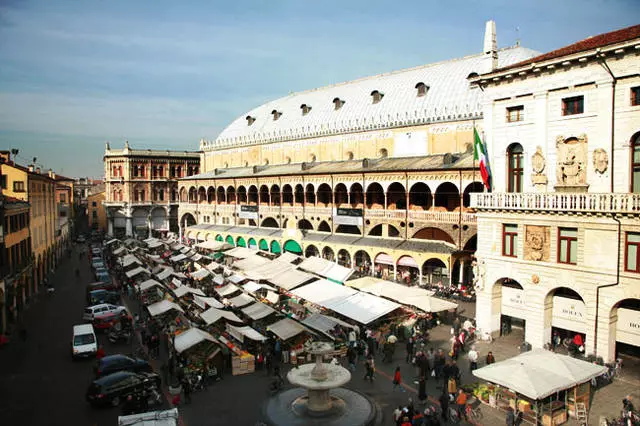
One of the most beautiful areas of Padua! In addition, here you can run out every day to trading rows with fresh products, souvenirs and flowers at sufficiently low prices. As for the sights, it should be noted that the area "captured" the vintage buildings of various eras, such as Palazzo della Rajion and Koujou de Padov - Luxury Baroque buildings, decorated with the statues of the Antique Gods of Jupiter, Venus and Apollo. Next to the square, you can find a library del Department, which was built in 1370 and an office in an old building, whose facade was decorated and painted by local artist students. This is a great place for walking and shopping!
Palazzo della Rajone (Palazzo Della Ragione)

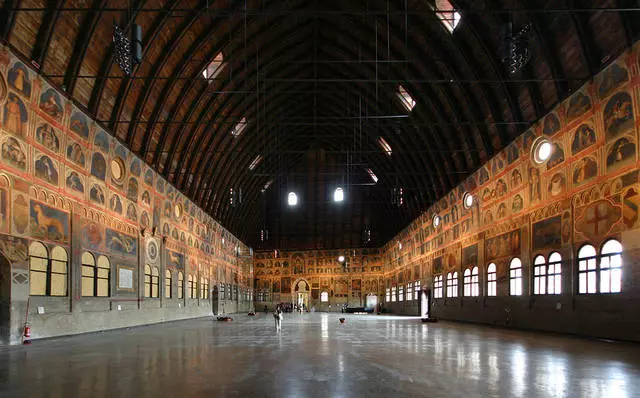
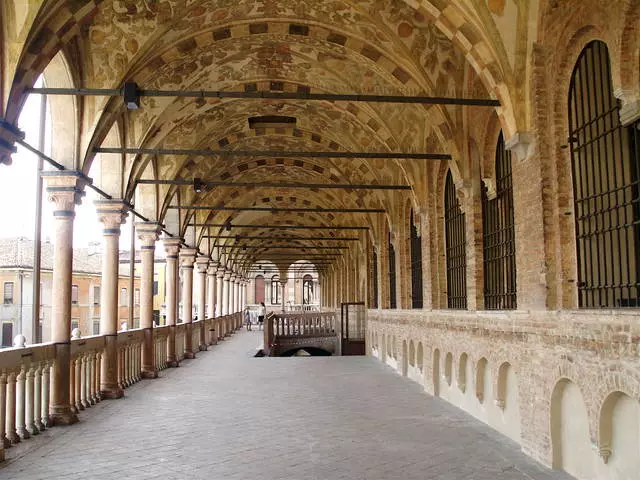
This is a luxurious palace built at the beginning of the 13th century, which was previously applied to the meetings of the city court. In those days, the building was rather boring while somewhere in the 15th century one of the monks did not take over the overhaul and reconstruction of the palace. The roof in the form of a keel of the ship was covered with lead plates, from the inside the walls painted with an indispensable number (about 500) frescoes. Interestingly, the frescoes are connected together by the theme of the year. It is a pity that some of these wonderful works of the arts of the Renaissance were destroyed by a powerful fire for several centuries ago, but even what remains - an incredible cultural and architectural heritage! At the moment, Palazzo is considered one of the largest halls of the Middle Ages, and tourists do not get tired to admire the foco pendulum suspended under the dome of the palace.
Address: Piazza Dell'erbe Square
Monument to Gattamelate (Monumento Equestre Al Gattamelata)
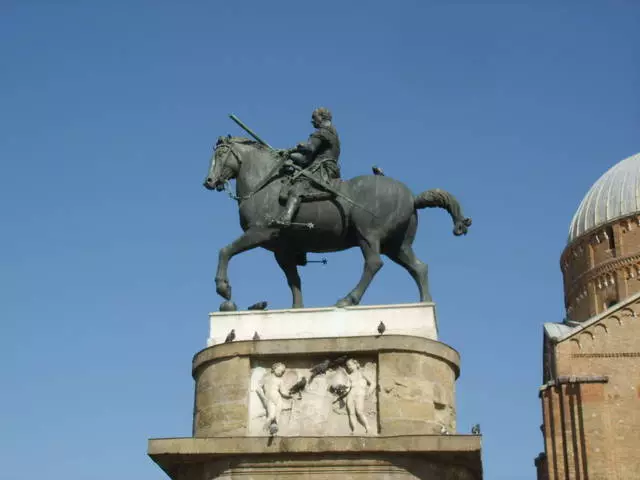
This monument is one of the best and most famous creatures of the Italian sculptor of the Renaissance Donatello. The monument is set here at the end of the 15th century. Who is dedicated to this courageous statue? Erasochi yes Narni on nicknamed Gattamälata. He was famous for all Italy by Konotyer, that is, the head of the hired military units. This Erasocho was born in a simple baker family, and a long way was held "from the dirt in the prince", and then became famous for the fact that he won a lot of victories over the Venice Republic. What and deserved the honor "to be" opposite the Basilica of St. Anthony. By the way, at that time, the fashion for horse statues somehow subsided, and Donatello decided to resume it. And I did it right, because the monument on an equally beautiful pedestal turned out very and very beautiful!
Address: Piazza Del Santo, 21
Tomba Di Antenore)

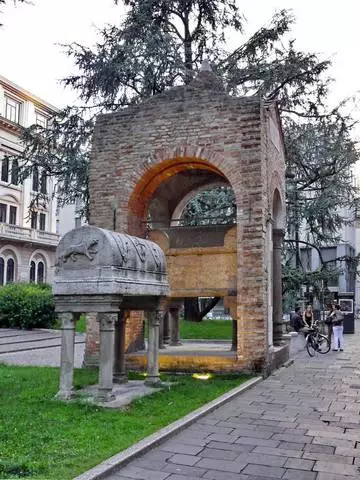
According to the legend, this grave keeps the remains of the founder of Padua. It is not surprising that this burial is located in the heart of the city. The legend says that a certain prince of Antenor (surprisingly, not in his honor called the city) Saved after the destruction of Troy, arrived here and founded the city. He even writes about the ancient Roman poet Vergil in his "Aneida". The legend has greatly strengthened in the heads of the inhabitants of Padua, when the remnants of men were found in the Middle Ages with a sword and gold coins in the lead curtain - here it was accepted for the National Hero of the antenor and, in fact, they built the Edikul, that is, the tomb and there it was reburied with all the honors. The stone monument is decorated with two quatrasions on Latin written by the poet of Lovati, who and "Dodumal" this legend. Later, this monument was put on different squares of the city, until he turned out to be where it costs today, and in the middle of the last century, Lovati's grave was postponed there. By the way, the legend turned out to be groundless when at the end of the 20th century, the remains of the lead coffin were checked in the laboratory and found out that there was no Trojan Prince, but only a Hungarian warrior who died in the 9th century. But faith of residents in a wonderful founder ruler is already difficult to break, and more convenient.
Address: Via San Francesco, 15
Here is such a mysterious Padu!
